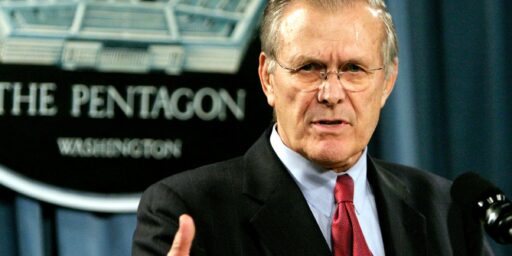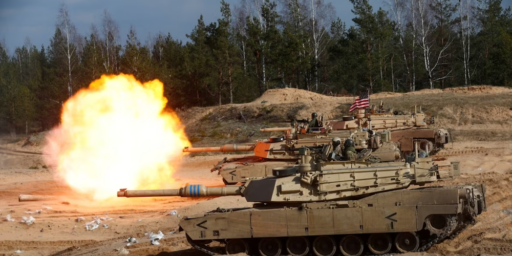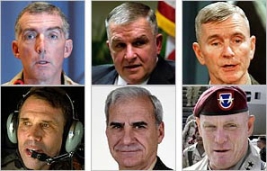IT’S THE SYSTEMS, STUPID
The military historian Frederick Kagan has a piece in today’s WSJ (apparently a reprint of a recent piece in something called The New Criterion) arguing that the Rumsfeld transformation effort is dangerous because it seeks to substitute machines for men. Kagan advances his argument through a woeful understanding of modern military history.
In the 20 years from 1965 to 1985 America fielded a host of new weapons systems, created a global satellite constellation and advanced communications systems, and pioneered the development of entire new technologies such as stealth and precision-guided munitions (PGMs). In the midst of that technological transformation, a sociological transformation was also taking place within the armed forces. In the mid-1970s the U.S. abandoned the draft and recruited an all-volunteer professional military. Current military theory focuses almost exclusively on the technological aspect of transformation, but the human element was at least as important in bringing the American armed forces to their current level of excellence.
Almost all of the main weapons systems American forces used in Iraq and Afghanistan were developed and fielded in the 1960s and 1970s. The Air Force used new concepts of aircraft design and took advantage of computerization to produce the first generation of “superfighters,” including the F-15 and F-16, while the Navy developed its equivalent in the F-14. These aircraft, together with the F/A-18 fielded somewhat later, dominated the skies over Iraq and have led many of America’s likeliest competitors to focus on air defense systems rather than on building their own aircraft with which to challenge the superfighters.
***
At the same time, the Air Force also fielded the A-10 ground attack aircraft. This ungainly, heavily armored plane with a 23mm antitank gun in its snout was designed to be the best tank-killer in the air. Its armor protects it from antiaircraft machine guns and allows it to fly low to the ground and slowly enough to identify and engage its targets directly. It was enormously effective in Iraq, filling a specific niche that directly supported the Army’s missions as well as the larger goal of destroying Iraq’s armored forces. In short, it was not simply the development of PGMs that has made the U.S. Air Force the best in the world, but the quality of its aircraft across the board and in every specialty.
He makes similar assessments of the Abrams tank and other military hardware.
The problem with this logic is that is tells only part of the story. While Kagan mentions satellites at the beginning of that excerpt, he radically understates their importance. What has made the American military so dominant is not simply that our tanks and planes are better than those of our adversaries, although they indeed are, but that we use them much, much better. Why? Because we employ them as systems not as simple tools of war. The so-called Revolution in Military Affairs is not about better toys but synergy in what the wonks call C4ISR (command, control, communications, computers, intelligence, surveillance, and reconnaisance). It’s not just that our tanks are faster and more accurate than those of our enemies, but that we have the ability to employ them precisely through superior communications, target acquisition, etc. It’s not that our planes are faster and equipped with better missiles, but that a combination of C4ISR resources like AWACS and J-STARS allow perfect coordination of all the planes with the resources of our other forces. Not to mention such innovations as GPS.
In addition to the technological advantage is a massive gap in training. No one else has anything like National Training Center, Top Gun, Red Star, Joint Readiness Training Center, and countless other highly specialized, realistic, and EXPENSIVE tools that we’ve been using to train our forces since the late 1970s.
Rumsfeld is basically right in the direction he’s trying to take our Armed Forces. We don’t need to upgrade our planes and tanks; they’re already good enough. What we need is more resources to increase and maintain our lead in training and combat multipliers. Plus, more of the types of forces needed for stabilization operations and fewer of the type needed for fighting the Soviets.





